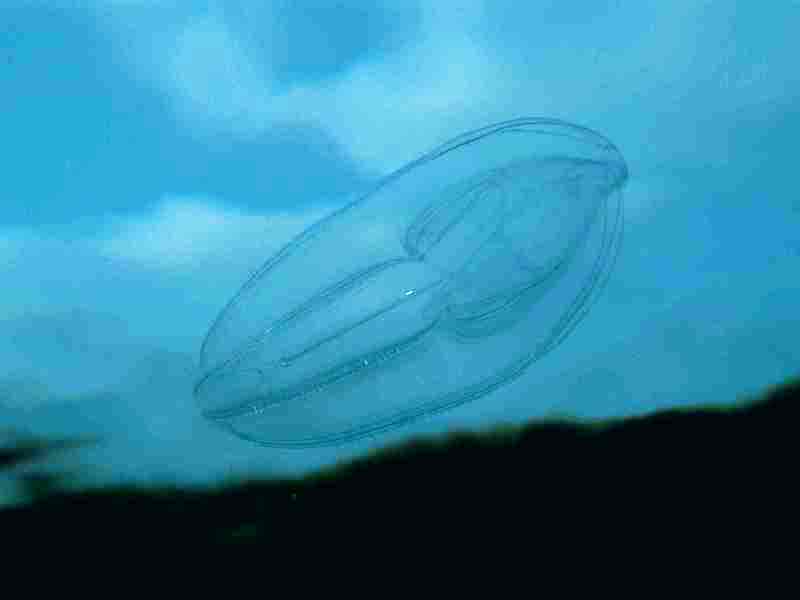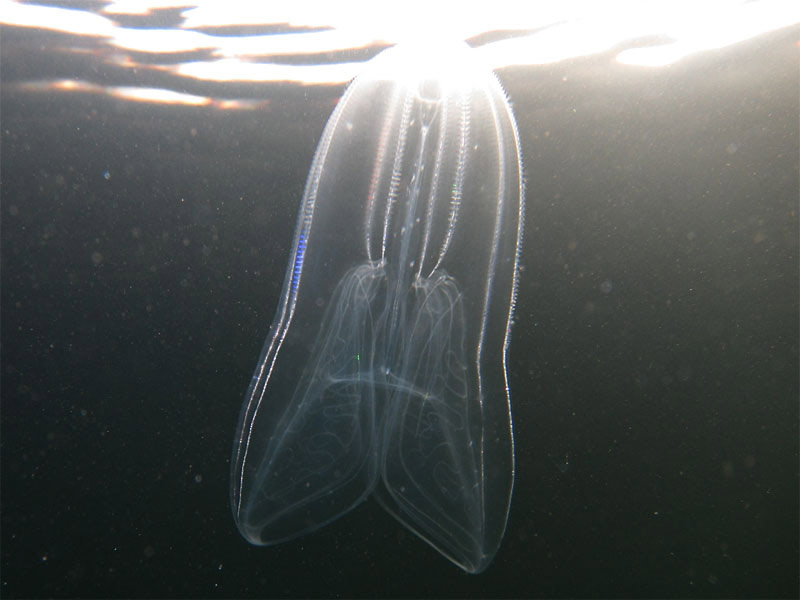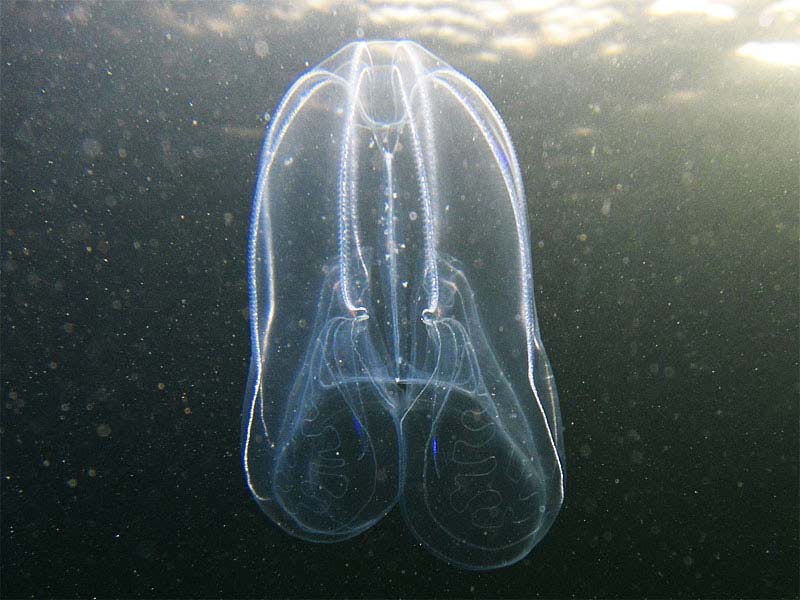Common northern comb jelly (Bolinopsis infundibulum)
Distribution data supplied by the Ocean Biodiversity Information System (OBIS). To interrogate UK data visit the NBN Atlas.Map Help
| Researched by | Morvan Barnes | Refereed by | Admin |
| Authority | (O.F. Müller, 1776) | ||
| Other common names | - | Synonyms | - |
Summary
Description
Bolinopsis infundibulum is a medium-sized, oblong shaped comb jelly. It may reach up to 15 cm in length. It is completely transparent or, more rarely, a milkish white colour. It swims with eight longitudinal combs, four long rows and four short rows, that give the comb jellies (ctenophores) their characteristic shimmering appearance. These combs consist of plates of transverse rows of hairs that beat in waves downwards, which produces the shimmering effect. These plates are phosphorescent at night. Bolinopsis infundibulum only has two small tentacles with fringes along its sides.
Recorded distribution in Britain and Ireland
Found throughout British and Irish waters.Global distribution
-Habitat
Pelagic in coastal waters but may sometimes become trapped in intertidal pools.Depth range
-Identifying features
- Transparent oblong body up to 15 cm in length.
- Radially symmetrical with secondary bilateral symmetry.
- Eight longitudinal rows of combs, four short and four long rows.
- Two small tentacles.
- The mouth is surrounded by two large flaps.
- The opposite end of the body is forms an obtuse point.
Additional information
Bolinopsis infundibulum is carnivorous and feeds on copepods, euphausids and other zooplankton. Prey are funneled on to the mucous-covered loral flaps with the aid of ciliated structures known as auricles. Cilia transport the captured food to the mouth (Gamble, 1977).
Listed by
- none -
Bibliography
Costello, J.H., 1998. Planktonic feeding and evolutionary significance of the lobate body plan within the ctenophora. Biological Bulletin, 195, 247-248.
Gamble, J.C., 1977. Population structure, feeding behaviour and fecundity of the lobate ctenophore, Bolinopsis infundibulum. ICES Committee Meeting Papers and Reports, C.M.1977/L:16
Greve, W., 1975. Ctenophora. ICES Plankton Identification Leaflets, 146.
Howson, C.M. & Picton, B.E., 1997. The species directory of the marine fauna and flora of the British Isles and surrounding seas. Belfast: Ulster Museum. [Ulster Museum publication, no. 276.]
Datasets
NBN (National Biodiversity Network) Atlas. Available from: https://www.nbnatlas.org.
OBIS (Ocean Biodiversity Information System), 2025. Global map of species distribution using gridded data. Available from: Ocean Biogeographic Information System. www.iobis.org. Accessed: 2025-07-21
Suffolk Biodiversity Information Service., 2017. Suffolk Biodiversity Information Service (SBIS) Dataset. Occurrence dataset: https://doi.org/10.15468/ab4vwo accessed via GBIF.org on 2018-10-02.
Citation
This review can be cited as:
Last Updated: 17/04/2008





